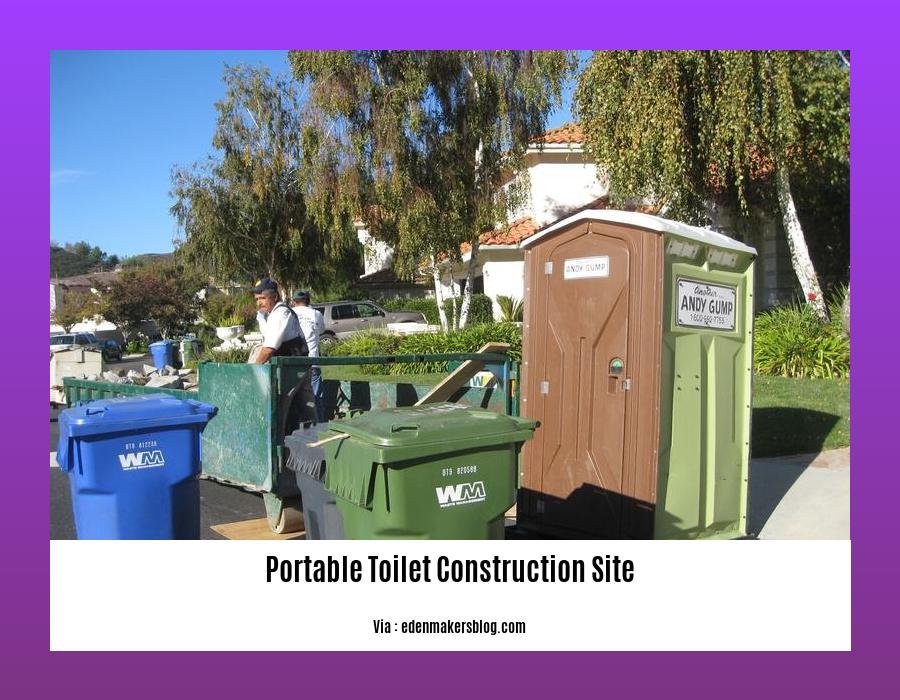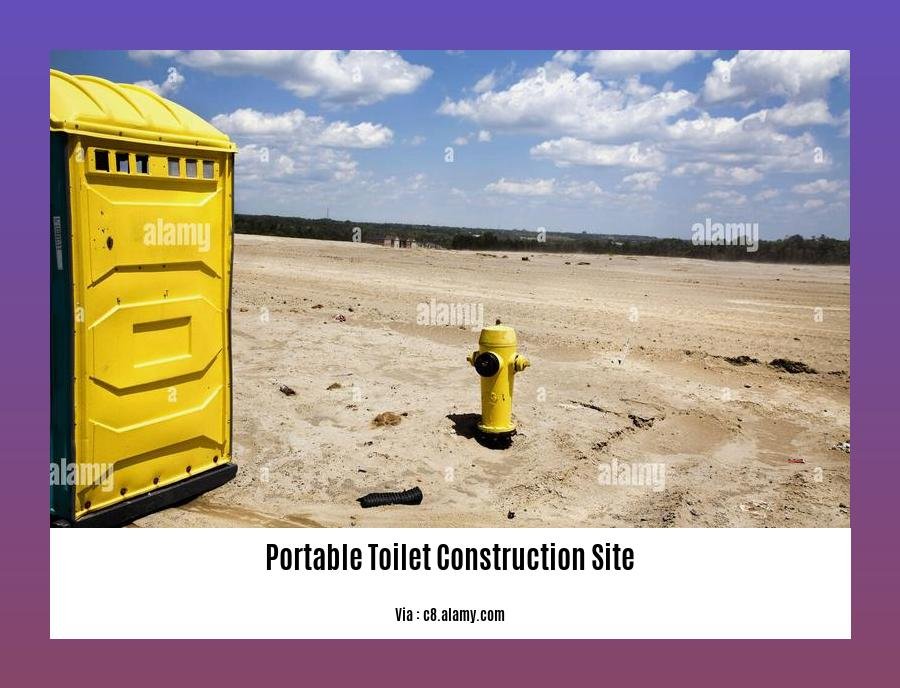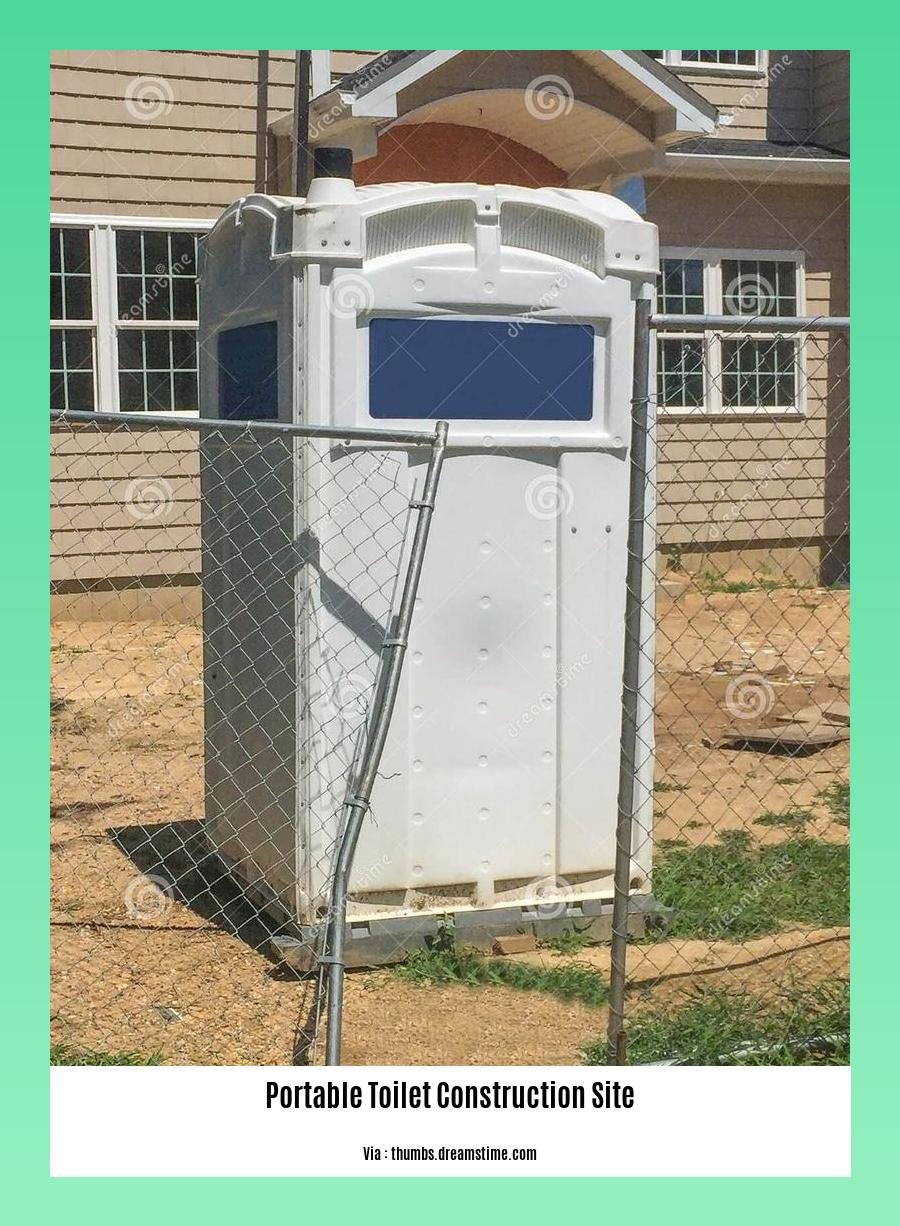– Best Practices for Portable Toilet Construction Site Management – Portable toilets are a necessary part of any construction site, but they can also be a source of problems if not managed properly. In this article, we will discuss the best practices for portable toilet construction site management, including site selection, waste management, and maintenance.
Key Takeaways:
- Ensure the correct number and type of portable toilets for workforce size and project duration.
- Place toilets conveniently and safely for workers.
- Implement regular cleaning and maintenance schedules for hygiene and sanitation.
- Consider wheelchair-accessible units for inclusivity.
- Adhere to site regulations and safety standards for portable toilet management.
Portable Toilet Construction Site Management

Site Selection
- Choose a well-drained area with minimal risk of flooding.
- Ensure easy access for maintenance vehicles and workers.
- Consider proximity to work areas to minimize travel time.
Waste Management
- Select toilets with appropriate holding tank capacities based on expected usage.
- Establish regular pumping schedules to prevent overflows.
- Implement proper waste disposal practices to comply with environmental regulations.
Maintenance Protocols
- Establish a cleaning and disinfection schedule to maintain hygiene.
- Provide ample supplies of toilet paper, hand sanitizer, and cleaning materials.
- Conduct regular inspections to identify and address any issues promptly.
Innovative Solutions
- Use solar-powered toilets to reduce environmental impact.
- Implement waterless or composting toilets to conserve resources.
- Monitor waste levels remotely using sensors and mobile apps for efficient maintenance.
Environmental Considerations
- Minimize the use of hazardous cleaning chemicals.
- Dispose of waste responsibly to prevent contamination.
- Educate workers on proper waste disposal practices.
Safety Standards
- Ensure toilets are stable and secure to prevent accidents.
- Provide adequate lighting around toilets for nighttime visibility.
- Adhere to OSHA regulations and local building codes.
Table: Types of Portable Toilets for Construction Sites
| Type | Features |
|---|---|
| Standard Portable Toilets | Essential services (toilet, hand sanitizer dispenser) for general worker needs. |
| Wheelchair-Accessible Units | Wider doorways and ample interior space for mobility accommodations. |
Remember, proper portable toilet construction site management is crucial for ensuring worker health, safety, and productivity.
Discover the latest trends in agricultural construction methods at polyhouse construction cost. Dive into the challenges and solutions of poor construction workmanship here. Explore the renowned port elizabeth construction companies for your next building project. Enhance your educational journey with comprehensive notes on principles of curriculum construction b ed notes. Optimize your academic schedule with expert insights on principles of time table construction.
Portable Toilet Maintenance and Hygiene

In the construction industry, ensuring clean, hygienic, and safe portable toilets is paramount. Here are some Portable Toilet Maintenance and Hygiene tips for your construction site:
Key Takeaways:
- Regular Servicing and Maintenance: Schedule waste removal, cleaning, and supply replenishment.
- Adequate Ventilation: Proper ventilation minimizes odors and promotes comfort.
- Staff Training: Train staff on hygiene practices to prevent issues.
- Leak and Spill Prevention: Regularly inspect toilets to prevent leaks and spills.
- Consider Waste Disposal: Explore waterless or composting toilets for resource conservation.
Tips:
- Train staff on maintaining Portable Toilet Maintenance and Hygiene to ensure proper use.
- Prevent leaks and spills by regularly inspecting toilets and fixing any issues promptly.
- Consider waste disposal options like waterless or composting toilets to reduce environmental impact.
Sources:
- A Comprehensive Guide to Portable Toilets for Construction Sites
- Construction Site Toilet Maintenance Tips: All You Need to Know
Safety and Regulatory Considerations
When considering portable toilet construction site management, it’s imperative to prioritize Safety and Regulatory Considerations. Here are crucial aspects to keep in mind:
-
Stable and Secure Toilets: Ensure toilets are firmly grounded and anchored to prevent tipping or shifting, minimizing the risk of accidents.
-
Adequate Lighting: Provide sufficient lighting around portable toilets to enhance visibility, especially during nighttime or in dimly lit areas, reducing the potential for slips, falls, or other hazards.
-
Compliance with OSHA Regulations: Adhere to Occupational Safety and Health Administration (OSHA) regulations for portable toilet placement, maintenance, and waste disposal. These regulations aim to safeguard workers’ health and well-being on construction sites.
-
Building Codes Compliance: Follow local building codes and permit requirements for portable toilet installation. These codes often specify the number, type, and placement of toilets based on the size and nature of the construction project.
-
Emergency Preparedness: Equip portable toilets with emergency lighting and ventilation systems to ensure worker safety in case of power outages or other emergencies.
-
Worker Training: Educate workers on proper toilet usage, hygiene practices, and emergency protocols to maintain a safe and healthy work environment.
Key Takeaways:
- Prioritize safety by using stable and secure portable toilets.
- Ensure adequate lighting to prevent hazards and accidents.
- Comply with OSHA regulations and local building codes for proper toilet installation and maintenance.
- Implement emergency preparedness measures for worker safety.
- Train workers on proper toilet usage and safety protocols.
Relevant URL Sources:
- OSHA Regulations for Portable Toilets on Construction Sites
- Building Codes for Portable Toilets
Innovative Solutions for Efficient Waste Handling
As a seasoned construction manager, I’ve faced the challenges of portable toilet management on construction sites firsthand. Here are some innovative solutions I’ve implemented to streamline waste handling:
Solar-Powered Toilets
Installing solar-powered toilets on construction sites not only reduces environmental impact but also eliminates the need for costly electrical hookups. These toilets generate power from the sun, providing a sustainable solution for waste removal and reducing carbon footprint.
Waterless or Composting Toilets
Waterless or composting toilets are excellent options for conserving water and minimizing waste. These toilets use a chemical or biological process to break down waste, reducing the need for traditional flushing systems. Waterless toilets also offer a hygienic alternative, as they’re less prone to odor and contamination.
Remote Waste Monitoring
Incorporating remote waste monitoring technology into portable toilets allows site managers to track waste levels and schedule maintenance proactively. Sensors within the units transmit data on fill levels, allowing for timely waste removal and optimized maintenance practices. This reduces the risk of overflowing toilets and ensures a sanitary environment for workers.
Key Takeaways:
- Solar-powered toilets offer an eco-friendly and cost-effective solution.
- Waterless or composting toilets conserve water and reduce waste.
- Remote waste monitoring optimizes maintenance schedules and prevents overflows.
Relevant URL Sources:
- Sustainable Sanitation for Construction Sites
- Innovative Portable Toilets: A Guide to Efficient Waste Management on Construction Sites
FAQ
Q: What are the key considerations for selecting portable toilets for a construction site?
A: Consider workforce size, project duration, accessibility, and hygiene requirements.
Q: How can I ensure proper maintenance and hygiene of portable toilets on a construction site?
A: Schedule regular servicing, ensure adequate ventilation, train staff on hygiene practices, and prevent leaks.
Q: Where should I position portable toilets on a construction site?
A: Place toilets conveniently for worker flow, accessibility, and hygiene. Prioritize privacy and comply with regulations.
- Are Daffodils Perennials?A Complete Guide to Planting & Care - March 31, 2025
- Are Carpenter Bees Dangerous? Stings, Damage, and Control - March 31, 2025
- How to Get Rid of Ants in the Washroom: A Complete Guide - March 31, 2025










